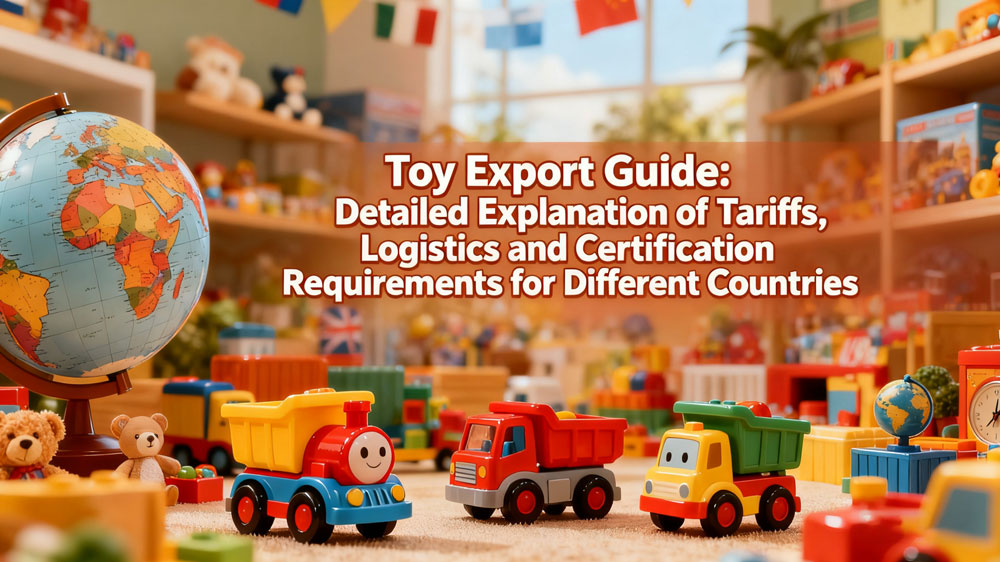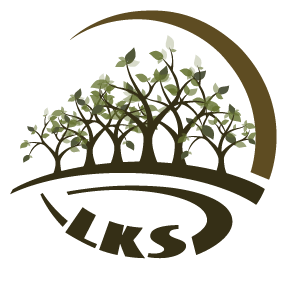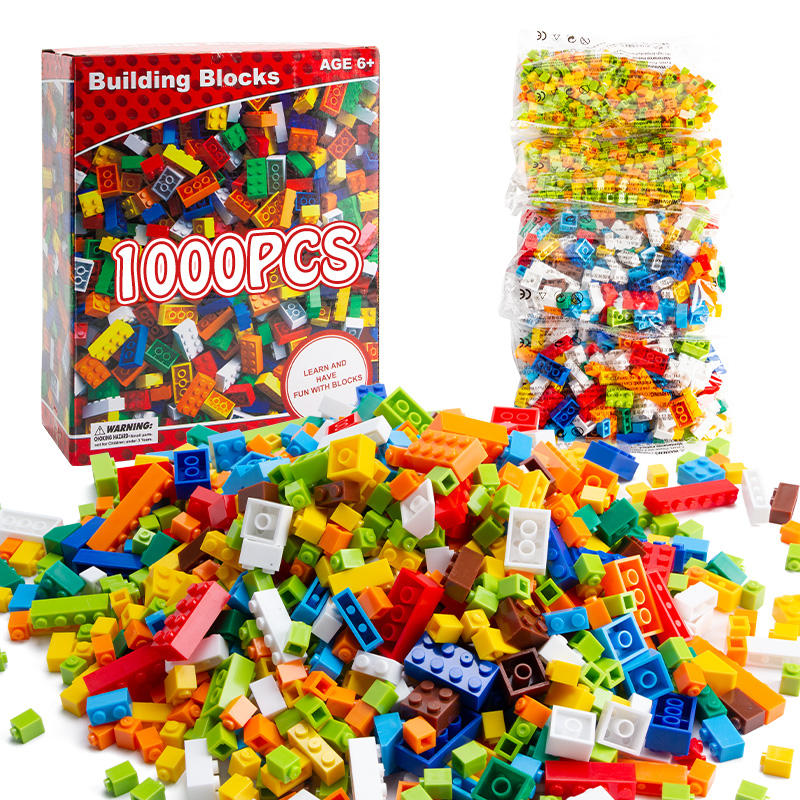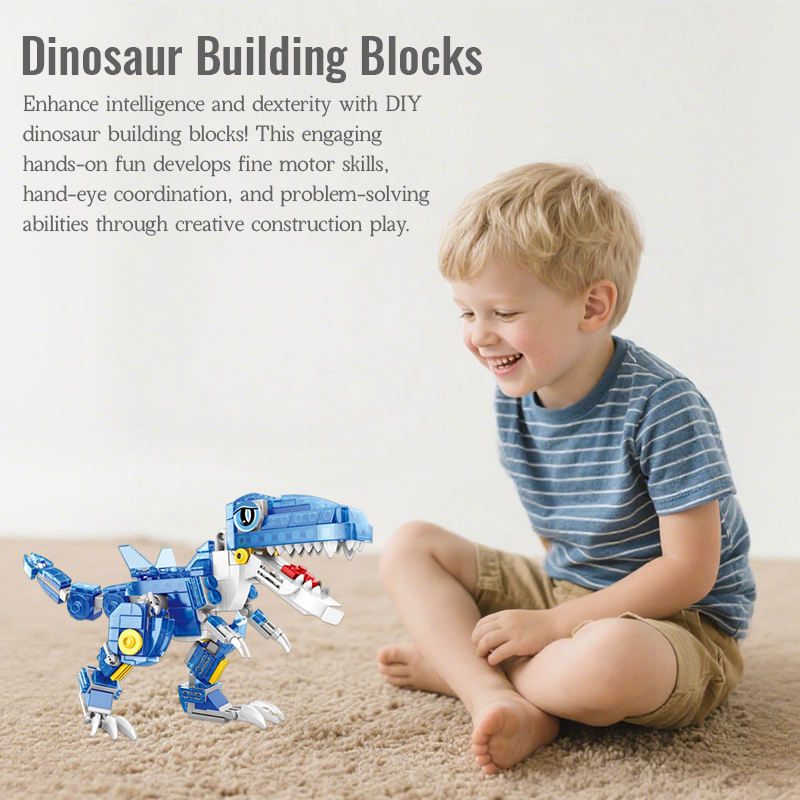The difference between a successful toy export strategy and costly delays often comes down to understanding the intricate web of international regulations.
For toy manufacturers and exporters, navigating the complex landscape of international trade has become increasingly challenging with recent regulatory shifts across major markets. From updated safety standards to revised tariff structures, these changes directly impact sourcing decisions, logistics planning, and market entry strategies. This comprehensive guide provides updated information for 2025 to help businesses navigate the evolving global toy trade environment.

Key Market Overview: Tariff & Regulation Changes
United States Market
The U.S. maintains its position as the world's largest toy market, but with important regulatory considerations:
- Tariff Structure: While the base tariff for toys is 0%, additional tariffs including a 20% Fentanyl-related tariff and a 10% reciprocal tariff bring the effective rate to 30% for Chinese-origin toys.
- Safety Compliance: Toys must comply with ASTM F963-23 standards, with the updated version effective since April 2024. Critical requirements include:
- CPSIA tracking labels containing importer name, manufacturing location, date, and batch number
Children's Product Certificate (CPC) demonstrating compliance
Physical and mechanical testing to address choking hazards and other risks
- Special Considerations: California's Proposition 65 requires warning labels for products containing chemicals known to cause cancer or reproductive harm.
European Union Market
The EU maintains stringent toy safety regulations with recent updates:
- Safety Framework: The Toy Safety Directive (2009/48/EC) mandates CE marking and compliance with EN 71 series standards. Recent updates include:
EN 71-15:2025 for formamide in foam materials
EN 71-16:2025 for chlorinated phosphor flame retardants
EN 71-17:2025 for isothiazolinones in aqueous materials
- Customs Developments: The EU has proposed eliminating the €150 duty-free threshold for non-EU e-commerce shipments, which would affect direct-to-consumer toy exports.
- Logislation Requirements: Since September 2025, the EU has enforced stricter import controls, with incomplete product descriptions potentially resulting in refusal of entry or substantial fines.
Southeast Asia Markets
Southeast Asia presents growing opportunities with specific regional requirements:
Table: Southeast Asia Toy Certification Requirements
|
Country |
Mandatory Certification |
Special Testing Requirements |
Processing Time |
|
Thailand |
TISI certification |
Flammability testing (ISO 8124-2) |
6-8 weeks |
|
Malaysia |
SIRIM certification |
Heavy metal migration (EN71-3) |
4-6 weeks |
|
Vietnam |
QCVN 09:2020 |
Formaldehyde (≤30mg/kg for textile toys) |
8-12 weeks |
|
Indonesia |
SNI certification |
Phthalates (BPOM testing) |
10-15 weeks |
Logistics & Customs Compliance
Shipping Documentation
Proper documentation forms the foundation of successful toy exports:
- Essential Documents: Commercial invoice, packing list, bill of lading, and certificate of origin
- Product Descriptions: FedEx has implemented stricter requirements since August 2025, mandating detailed descriptions rather than generic terms like "toys"
- Special Cases: Electric toys require circuit diagrams, while licensed toys need copyright sales authorization letters
Logistics Strategies
Different shipping methods balance cost, speed, and risk:
- Full Container Load (FCL): Costs $2,200-3,500 for 20GP containers with 15-20 day transit times
- Less than Container Load (LCL): $800-1,200 for shipments under 2 tons, with 18-25 day transit times but higher risk of damage (over 35%)
- Emergency Shipments: China-Laos Railway combined with trucking offers 7-10 day transit at $4.5/kg
Practical Export Strategies
Certification Planning
- Multi-standard Testing: Use laboratories with CPSC, CNAS, and UKAS accreditation to simultaneously test for multiple markets
- Lead Time Management: Account for certification processing times, particularly for markets like Indonesia with 10-15 week SNI certification processes
Risk Mitigation
- Insurance Coverage: Obtain ALL RISK insurance at approximately 0.15% premium rate to cover war and strike disruptions
- Customs Emergency Funds: Pre-set funds for potential delays, such as $85/day demurrage fees in Manila Port
Market Entry Approach
- Start with Stable Markets: Begin with Thailand or Malaysia which have relatively stable policies
- E-commerce Integration: Leverage platforms like Shopee and Lazada for market testing, with attention to local language requirements
Future Outlook & Strategic Recommendations
The global toy trade landscape continues to evolve, with several trends likely to impact exporters:
- Increased Scrutiny of E-commerce: Following Vietnam and Mexico's lead, more countries may implement VAT collection requirements for cross-border e-commerce
- Chemical Regulation Expansion: Anticipate further restrictions on substances like BPA and phthalates across markets
- Origin Verification: Enhanced enforcement of transshipment rules, as seen in the U.S.-Vietnam trade agreement establishing a 40% tariff for transshipped goods
For toy exporters, success in 2025 and beyond requires proactive compliance management, diversified market strategies, and strong partnerships with logistics providers well-versed in sector-specific requirements. By mastering these elements, businesses can turn regulatory complexity into competitive advantage.
For specific guidance on your toy export strategy or to discuss how these regulations apply to your product range, consult with trade compliance experts or customs brokers specializing in toy shipments.
Post time: Sep-26-2025





